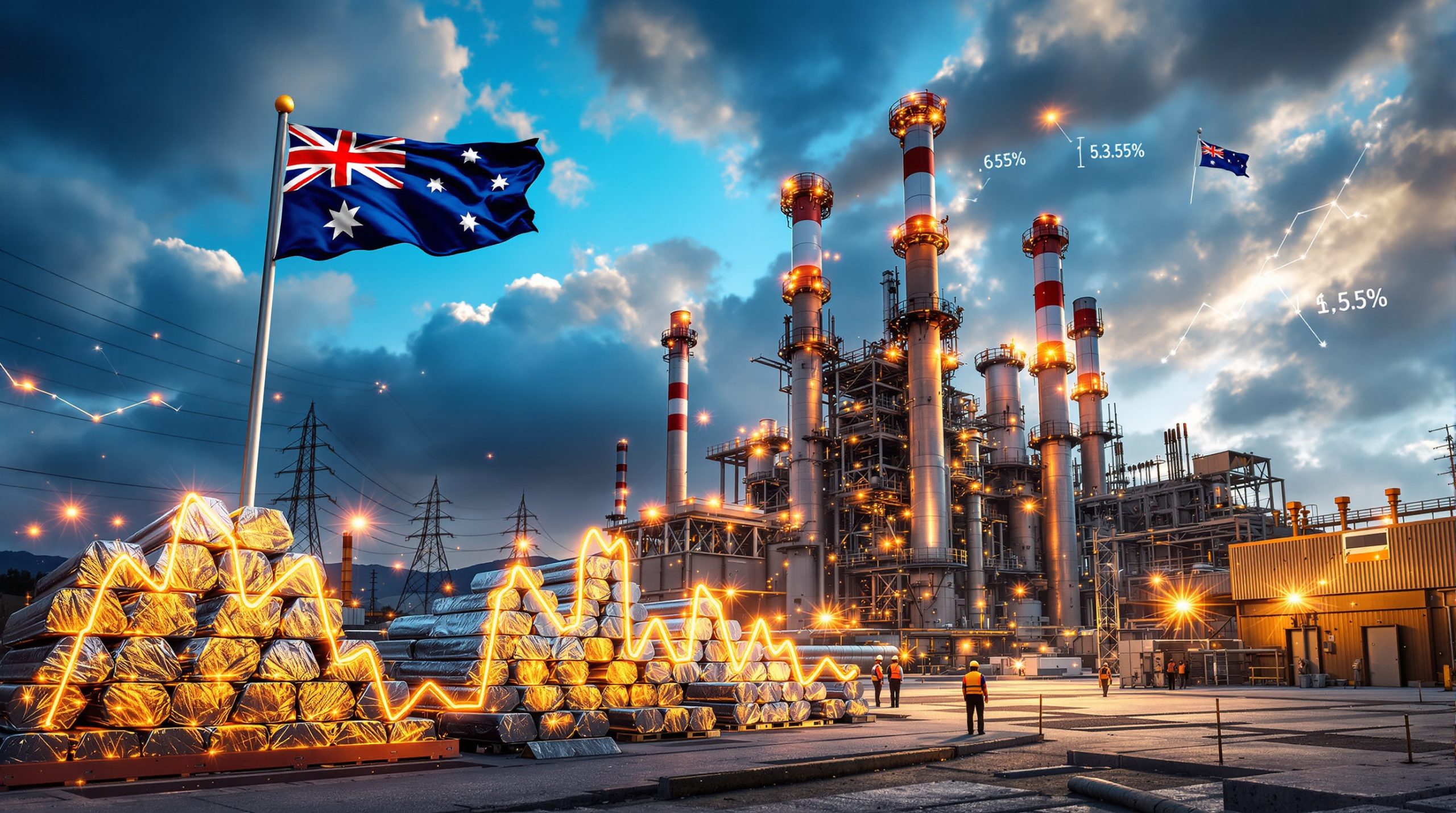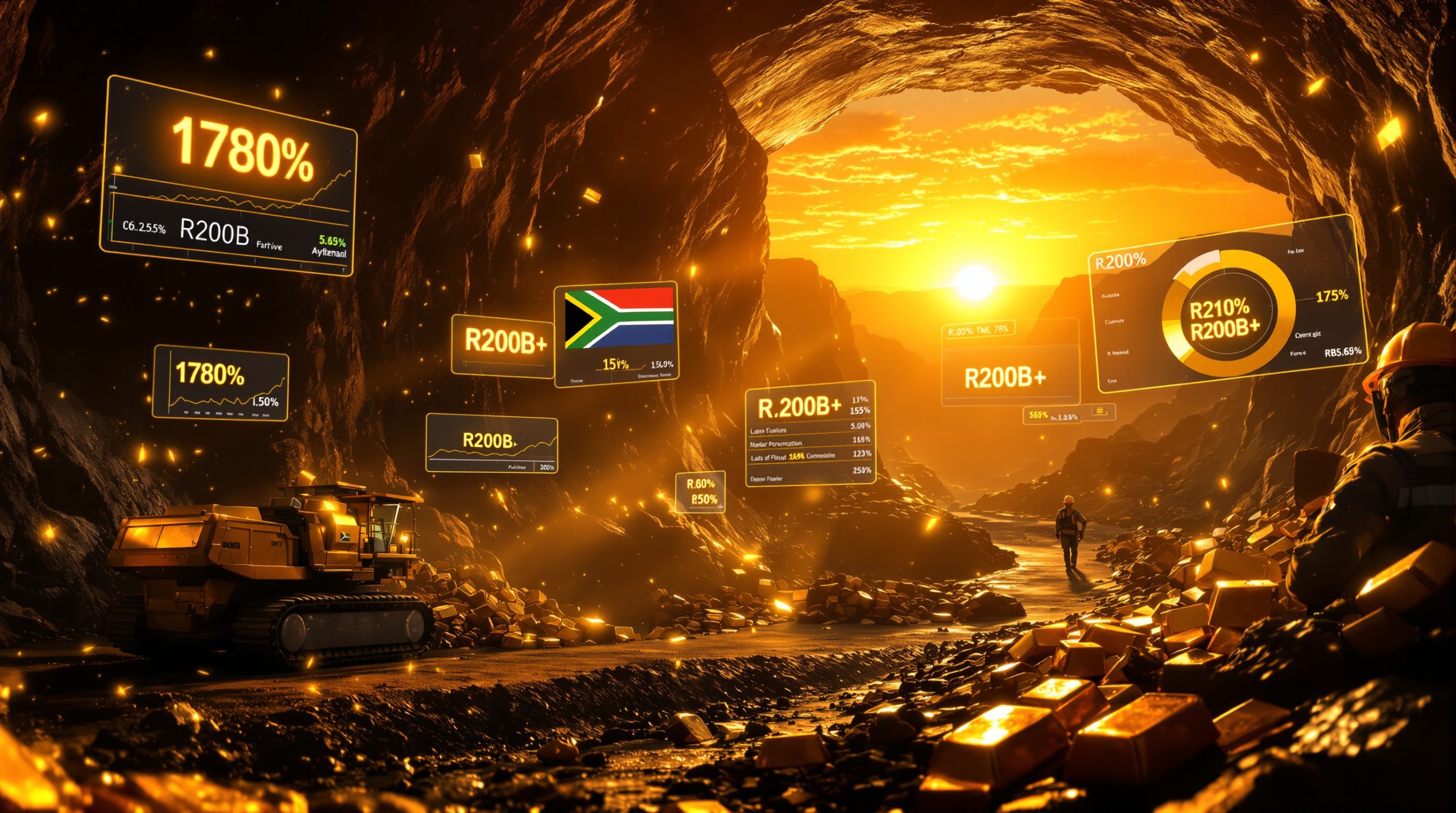Freeport-McMoRan CEO Expresses Concerns Over US Tariffs and Global Economic Health
Freeport-McMoRan CEO Kathleen Quirk has voiced significant concerns about the implications of sweeping US tariffs on global economic stability, particularly for the copper industry. As the leader of America's largest copper producer, Quirk's warning carries substantial weight in commodity markets where copper serves as a bellwether for broader economic trends.
The Trump administration's implementation of tariffs ranging from 10% to 50% on imports has sent ripples through international markets, with copper prices experiencing notable volatility. These protectionist measures have intensified tensions with major trading partners, particularly China and the European Union, creating uncertainty in global supply chains critical to copper-intensive industries.
"When you have a lot of economies and politicians talking about trade wars, it creates a risk profile around economic growth that we can't ignore," Quirk emphasized during her address at the CESCO mining conference in Santiago, Chile. Her comments reflect mounting apprehension throughout the mining sector about long-term investment decisions amid escalating trade disputes.
Financial markets have responded negatively to these developments, with copper futures on the London Metal Exchange (LME) declining approximately 5% in the weeks following the tariff announcements. This downward pressure raises concerns about future mining investments, which typically require decade-long planning horizons and stable demand forecasts.
What Are Freeport-McMoRan's Specific Concerns?
Quirk's primary concerns center on the potential for tariff-induced economic contraction and inflationary pressures that could destabilize key copper-consuming sectors. The CEO was unequivocal about the risks, stating during her presentation, "We can't ignore the fact that a trade war could cause people to not invest, to not buy, to change their patterns and affect demand."
The mining executive drew parallels to the 2008 global financial crisis, during which copper demand collapsed by nearly 20% within a period of months as construction projects halted and manufacturing contracted worldwide. This historical precedent looms large in industry planning, with Quirk noting, "All of us rely on a market that's growing in demand and not subject to big recessions."
Of particular concern is potential demand disruption across three critical sectors: construction, which accounts for approximately 40% of global copper consumption; power generation and transmission infrastructure, representing roughly 25%; and electronics manufacturing, which consumes about 20% of global copper production. These sectors are especially vulnerable to economic uncertainty and trade disruptions.
The company's institutional memory of previous downturns has shaped its cautious approach to current market conditions. During the 2008-2009 period, Freeport-McMoRan was forced to slash production by nearly 15% and defer several major capital investments, a scenario executives are keen to avoid repeating.
The Dual Impact of Tariffs on Freeport-McMoRan
In a paradoxical twist, the tariffs present Freeport-McMoRan with a potential windfall of approximately $400 million in annual profit boost due to its substantial US operations. As domestic producer prices rise in response to tariffs on imported materials, the company stands to benefit from premium pricing for its American-produced copper.
However, Quirk's public comments reflect a more nuanced position that balances short-term company benefits against long-term industry sustainability concerns. "While we might see near-term advantages from tariffs, our business requires long-term planning and stable global demand growth," she explained during the industry conference.
The company's global footprint makes it particularly vulnerable to trade disruptions. With major operations spanning Chile, Peru, Indonesia, and Europe, Freeport-McMoRan relies on functioning international markets and predictable trade relationships. Furthermore, Chile copper production trends show increasing volatility that further complicates the company's operational planning. The company's Chilean operations alone account for approximately 30% of its global copper production capacity.
As the largest US copper producer and operator of one of only two domestic copper smelters, Freeport-McMoRan occupies a unique position in conversations about national resource security. The Miami, Arizona smelter, which processes approximately 650,000 metric tons of concentrate annually, represents a critical piece of domestic infrastructure that aligns with protectionist policy goals but depends on global market stability for long-term viability.
How Copper Markets Signal Broader Economic Trends
Copper's nickname as "Dr. Copper" derives from its remarkable ability to predict broader economic trends, often with greater accuracy than formal economic indicators. This predictive power stems from copper's ubiquitous presence in virtually every sector of modern industrial economies—from housing and automotive manufacturing to renewable energy and electronics.
Recent copper price movements in response to tariff announcements have been telling. After reaching near-record highs above $10,000 per metric ton in early 2023, prices retreated approximately 8% following escalating tariff rhetoric, reflecting market uncertainty about future demand scenarios.
The connection between copper demand and global construction and manufacturing activity is particularly strong. Economists at Goldman Sachs have identified a 0.85 correlation coefficient between global manufacturing PMI (Purchasing Managers' Index) and copper price movements, underscoring copper's role as an economic barometer.
These market signals have profound implications for investment in multi-billion dollar mining projects. Developing a world-class copper mine typically requires $3-5 billion in capital expenditure and 7-10 years of development time. Companies must carefully evaluate long-term demand trends before committing to such investments, making trade policy stability particularly crucial for future copper supply.
"When we consider a new mine development, we're looking at demand forecasts extending 15-20 years into the future," explained Quirk. "Political and trade uncertainties complicate these projections significantly."
US Domestic Copper Production Strategy
Freeport-McMoRan's extensive US operations align closely with the Trump administration's goals of expanding domestic critical mineral production. The company operates seven active copper mines across Arizona and New Mexico, accounting for approximately 1.5 million metric tons of annual production capacity.
Current US copper production capacity meets only about 35% of domestic demand, creating a strategic vulnerability that tariff policies attempt to address. However, expanding domestic production faces significant challenges, including declining ore grades, stricter environmental regulations, and extended permitting timelines that can exceed seven years for major projects.
The company recently completed a major expansion at its Morenci mine in Arizona, increasing production capacity by approximately 225 million pounds annually. "The Morenci expansion project is substantially complete and performing well," Quirk noted during a recent earnings call, highlighting the company's commitment to domestic production.
US strategy must contend with China's dominance in global copper markets. China currently controls approximately 40% of global refined copper production and has secured strategic supply positions throughout the "copper belt" of central Africa, giving it significant market influence. By comparison, US refined production accounts for just 7% of global output, despite America being the world's second-largest copper consumer.
"We welcome the opportunity to produce more copper in the US," Quirk stated, "but we also recognize that global markets and uninterrupted trade flows are essential for meeting total demand." Recent mining industry predictions suggest continued volatility in these critical supply chains through 2025.
FAQ: US Tariffs and the Copper Industry
What specific tariffs has the US imposed that affect copper?
The US has implemented tariffs ranging from 10% on most metal imports to 25% on specific copper products from China and the EU. Additionally, secondary tariffs on copper-intensive goods like electrical equipment and automotive components indirectly impact copper demand through their effects on manufacturing sectors.
How might copper prices respond to prolonged trade tensions?
Historical precedent suggests copper prices typically experience 15-20% declines during prolonged trade disputes as demand uncertainty increases. However, supply constraints from aging mines and declining ore grades globally may provide price support even amid trade tensions. Analysts at Citigroup project copper prices could fluctuate between $8,000-$9,500 per metric ton through 2025 depending on trade policy developments.
Which industries dependent on copper could be most affected?
Construction faces the highest exposure, particularly commercial building projects with 5-7% of costs tied to copper materials. The renewable energy sector, especially solar installations and grid infrastructure, would experience 3-5% cost increases. Additionally, automotive manufacturing—particularly electric vehicles containing 85kg of copper per unit versus 23kg in conventional vehicles—faces significant cost pressures under tariff scenarios.
What alternatives exist for copper-dependent manufacturers facing higher costs?
Aluminum substitution represents the most viable alternative in electrical applications, though with 40% lower conductivity and durability concerns. Advanced alloys using reduced copper content have emerged in plumbing applications, while recycled copper—currently supplying 32% of US demand—offers partial insulation from import tariffs. However, engineers at the American Society of Mechanical Engineers note that complete substitution remains technically unfeasible for many critical applications.
Expert Perspectives on Trade War Impacts
The recent CESCO conference in Santiago, Chile—the copper industry's premier annual gathering—revealed a remarkable consensus about tariff impacts. Over 80% of mining executives surveyed expressed concern about trade barriers undermining long-term investment decisions, according to data collected by CRU Group, a leading metals analytics firm.
Other mining executives have offered perspectives that both align with and diverge from Quirk's position. Codelco Chairman Juan Benavides struck a comparatively optimistic tone, suggesting that "temporary trade tensions will ultimately yield to the fundamental copper supply deficit projected to reach 8 million tons by 2030." Meanwhile, BHP CEO Mike Henry warned that "policy inconsistency creates unmanageable risk premiums for long-cycle industries like copper mining."
Financial analysts project that sustained trade tensions could reduce global copper demand by 2-3% annually, primarily through impacts on Chinese manufacturing exports. Goldman Sachs metals analyst Nicholas Snowdon has identified a potential "demand destruction scenario" where prices could retreat to support levels around $7,500 per ton if trade conflicts intensify.
Historical precedents offer limited comfort. During the 2018-2019 US-China trade dispute, copper prices declined approximately 20% over six months before stabilizing as markets adjusted to new trade patterns. However, today's more extensive tariff regime and broader geopolitical complications suggest potentially more significant and lasting impacts.
"The lesson from previous trade disputes is that markets eventually adapt," noted veteran commodity trader Pierre Andurand at the CESCO conference. "The question is whether adaptation comes through painful demand destruction or more efficient supply chains—history suggests some combination of both."
Recent copper M&A insights demonstrate that industry consolidation often accelerates during periods of market uncertainty, a trend that could intensify if trade tensions persist. Meanwhile, major players like Rio Tinto copper strategy indicates growing emphasis on developing projects in politically stable jurisdictions with clear regulatory frameworks.
Industry experts from global commodities insights firms suggest that the current Freeport-McMoRan CEO flags concern over global growth amid US tariffs represents just the beginning of a potentially transformative period for international copper markets that could reshape supply chains for decades to come.
Want to Stay Ahead of the Next Major Mining Discovery?
Don't miss potential game-changing investment opportunities in the mining sector. Visit Discovery Alert's dedicated discoveries page to see how major mineral discoveries have generated substantial returns and learn how their proprietary Discovery IQ model can give you the market edge you need.




